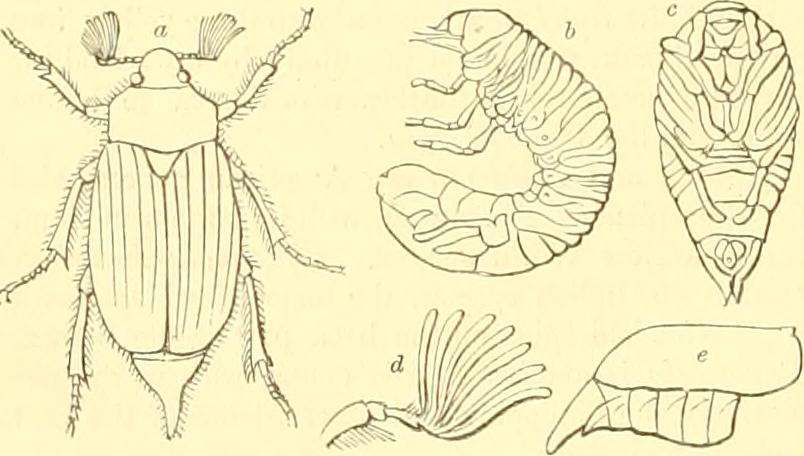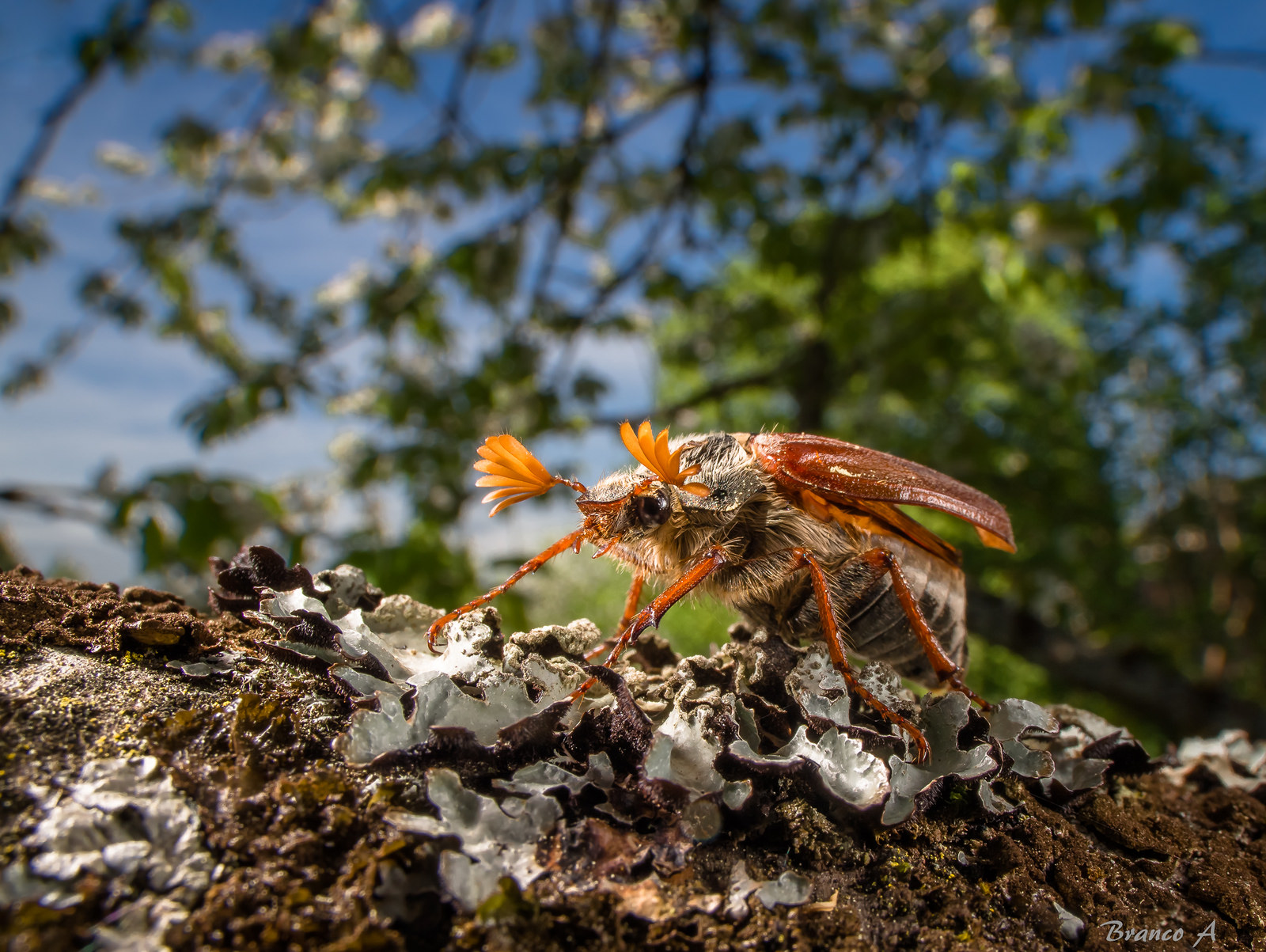Cockchafer (May-bug)
(Melolontha melolontha)
Order
Beetles
Scarab beetles (including the chafers and dung beetles) have characteristic antennae in which the final segments have fan-like extensions. The largest and most conspicuous of the almost 90 species of scarabs found in the British Isles is the Cockchafer (or May-Bug).
What do they look like?
Adult Cockchafers are found on and around trees and shrubs in gardens, parks, field hedgerows and woodland margins, feeding on leaves and flowers. The larvae, sometimes called rookworms, live in the soil and eat the roots of vegetables and grasses.
Where do they live?
Adult Cockchafers are found on and around trees and shrubs in gardens, parks, field hedgerows and woodland margins, feeding on leaves and flowers. The larvae, sometimes called rookworms, live in the soil and eat the roots of vegetables and grasses.
When can you see them?
The adult Cockchafer can be seen (and heard) flying on warm evenings from May to July.
Life cycle
The larvae – fat creamish-white grubs with brown heads – live in the soil feeding on plant roots for about three years, eventually reaching a length of 40-45 mm, before they pupate deeper in the soil, later emerging from the ground as adults in the spring.

What do they do?
In spite of its slightly frightening size and noisy flight, the adult Cockchafer is harmless. Although the adults eat the leaves of trees and shrubs, they rarely cause any significant damage in the UK. However, cherry and plum orchards in southern Europe sometimes suffer economic losses from Cockchafer feeding.
The larvae, if present in large numbers, can occasionally be pests of commercial vegetable crops, pastures, and grassed amenity areas such as lawns and grass-sports facilities (e.g. golf, cricket and bowling).
Did you know?
When they are flying, in the evening, Cockchafers are often heard before they are seen: their flight itself makes a strong whirring noise, but they also sometimes make a clatter when they accidently fly into the windows of lighted rooms.
Where can they be found?
The Cockchafer is widespread in Europe as far north as the centre of Sweden. It is widely distributed in the UK, wherever there are deciduous trees and shrubs for the adults and nearby meadows, fields or gardens for the larvae.


